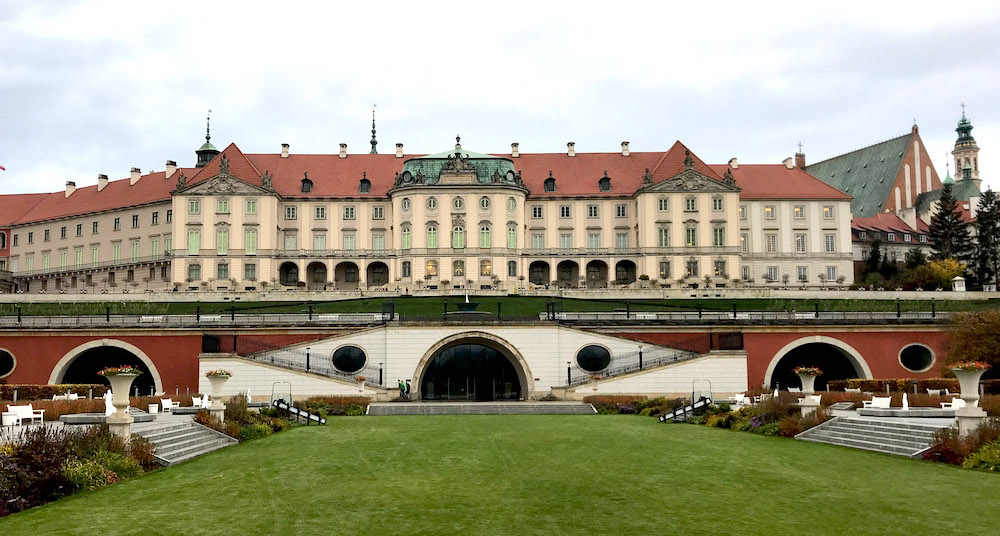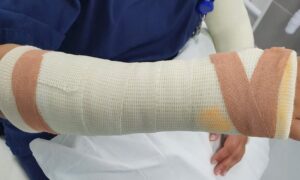Warsaw is not a destination that your mind goes to when planning a city trip in Europe but – rather like its phoenix-like character – the city has become a vibrant and colorful entity with much to offer any traveler.
Much of Warsaw’s recent history has been shaped by the Nazis, Russia and communism which one can imagine would create a city that was bleak and gloomy. But despite the devastation, when 85 percent of the city was left in ruins, and the deteriorating economy created by communism, Warsaw has become a major business hub and frequently ranks as one of Europe’s most livable cities.
On my recent visit I was really impressed with the economical and efficient public transport, the huge selection of museums and restaurants, and the friendliness and enthusiasm of its residents.
What to do in Warsaw

Old Town:

Until World War II, Warsaw was known as the “Paris of The North,” one of Europe’s most beautiful old cities. In 1939 the city was bombed by the Nazis as they invaded Poland, and the Old Town was further devastated after the Warsaw Uprising in 1944.
This UNESCO designated Historic Centre of Warsaw heritage site is a symbol of the resilience of “Varsovians” as they methodically rebuilt the Old Town using the debris, recreating this beautiful enclave.
Within the red brick city walls you will find The Royal Castle, which has a tour of the State Rooms, a free exhibition showing the reconstruction and gardens, which overlook the Vistula River and the district of Praga.
A wander around the old town is very rewarding with beautifully decorated buildings, amber stores, restaurants, and the much photographed Little Insurgent monument (right) that commemorates the child soldiers who died in the 1944 Warsaw Uprising.
From the Old Town, you can walk along one of the city’s most well-known and elegant streets, ul. Krakowskie Przedmieście, stopping occasionally for a rest on one of the musical Chopin benches.

• Museums:
Warsaw has a great selection of museums to visit and many are free on certain days of the week.
POLIN Museum of the History of Polish Jews ~ This stunning building, designed by Finnish architect Rainer Mahlamäki, is in the area that was once Warsaw’s “ghetto.” This museum combines innovation with history and in its 43,000 square feet of space houses permanent exhibitions about Poland’s Jewish history and the tragic account of the Holocaust, over half of the Jews murdered were Polish, and Warsaw’s Jewish ghetto.
The Warsaw Uprising Museum ~ This excellent museum tells the important account of the 1944 Warsaw Uprising in which 150,000 civilians were killed whilst fighting against the Nazis. The museum has well displayed information that tells of the uprising along with a Liberator bomber and a replica of the sewers used by the partisans to move unseen around the city.
The National Museum ~ has a huge collection of Polish art to tempt you if you are an art buff, along with some Rembrandts and other international stars.
Copernicus Science Centre ~ This is a great museum for kids and adults alike with experiments, a planetarium, and several permanent exhibitions including science shows and a robotic theatre.
Chopin’s Museum ~ This is a delight for any Fryderyk Chopin music fans but book ahead as the museum limits the amount of visitors. From interactive games and displays to objects from Chopin’s life such as a lock of his hair and his last piano. You can even see where his heart is located if you visit the Holy Cross Church ~ when he died his body was buried in Paris but he wanted his heart returned to his home city of Warsaw.
There are even more quirky museums to explore, for example the Neon Museum, full of communist era neon signs, the Vodka Museum (no description needed!), Modern Art Museum and the Poster Museum.
Monuments and Memorials:
There are many amazing monuments and memorials to visit and photograph whilst wandering around the city.
A Footbridge of Memory on ul. Cholodna is a commemoration of the wooden bridge that crossed the road from the Little Ghetto to the Big Ghetto. Metal poles stand either side of the road where the bridge once stood and at night it‘s lights project the bridge.
Chopin Benches play a burst of Chopin’s music at the flick of a switch and tell why the location of the bench is relevant to his life.
The Ghetto Heros Monument outside of the POLIN Museum commemorates the heroes of the Jewish ghetto.
The Kościuszkowców Monument represents the Russian led 1st Polish Infantry Division who supposedly tried and failed to cross the river to help during the Uprising. Most history buffs see this differently and feel that Russia was just biding its time so the monument is derisively nicknamed “Five Beers Please.”

The Monument to The Warsaw Uprising is controversial and powerful and shows insurgents during battle, using the sewers and fighting the enemy.
Praska Kapela Podwórkowa Monument (The Courtyard band) represents the tradition of buskers who played in the local courtyards.
This lists just a few as there are so many monuments to see in the city, from the war memorials to the statues of Ronald Reagan and Charles De Gaulle, to Warsaw’s own mermaid, you could spend the whole visit just walking from one to the other!
Check out In Your Pocket’s list here.

Other Things To Do
Warsaw Zoo ~ This is one of Europe’s busiest zoos and its 40 hectare site is home to more than 500 species. During WWII the zoo hid over 300 Jews and its story is documented in the novel and movie, “The Zookeepers Wife.”
Palace Of Culture and Science ~ this 237 metre high building, built in 1955, was commissioned by Stalin and was once the tallest building in Poland. The Communist era styled building projects a feeling of sinister power and Varsovians have a “love it or hate it” feel for it. The building now houses museums, a multiplex cinema, an auditorium, swimming pool and offices. Most tourists head for the viewing area on the 30th floor for the panoramic views of the city.
Vistula River ~ The longest river in Poland and in the summer months its banks provide a playground for Warsaw with cruises, beaches and bars.
Praga ~ a Warsaw district on the right bank of the Vistula this area is the new gritty “bo-ho” area to visit. The district was not destroyed during the war so old factories and apartment blocks still stand, although looking rather worse for wear and now is the time to visit before its face changes completely from the predictable “gentrification.” In Praga you can also find the zoo; museums; Koneser, a new development that includes the Vodka Museum; a great view of the Old Town across the river and the new National Stadium.
Łazienski Park ~ The largest royal park in Warsaw complete with a palaces, villas, monuments and acres of gardens to wander. During the summer months picnics and concerts can be enjoyed along with the locals and the many Polish tourists who come to visit the park.
Shopping Malls
Communism left Poland more than 30 years ago and capitalism brought with it some huge shopping malls.
They include Klif, Galeria Mokotow and Zlote Tarasy. A couple are in the outskirts of the city such as Fashion House, and Arkadia, both accessible with public transport.
Restaurants
Polish food is renowned for the staples of dumplings, sausages, meat and bread but there is so much more to the cuisine. Warsaw has many traditional restaurants but also a collection of great international restaurants and I was impressed by the availability of vegetarian cuisine.
Gospoda Kwiaty Polskie ~ A traditional Polish restaurant in the Old Town.
Pelna Para ~ A super dim sum restaurant with three locations in the city.
Where to stay
There are many great hotels, big and small, available in the city. We stayed at the Radisson Blu Sobieski. It’s not close to the Warsaw city centre but had easy access to trams, trains and the metro and was within walking distance of several attractions. There were some great restaurants close by and the hotel restaurant was also excellent, as was its enormous breakfast!
Warsaw was a big surprise for me and a city that definitely left me wanting more … more museums, more vodka and more shopping….

About the author:
Jackie Harding was born in the United Kingdom. As a longtime expat, she’s lived in Boston for 12 years and in the Netherlands for the past nine years.
Trained as a nurse in the U.K., she worked for nine years in the United States as a special education teacher’s assistant. Since moving to the Netherlands, she has discovered writing and photography.
Writing for Dispatches since 2016, Jackie has written about her travels around Europe as well as about expat life and issues.
She also covered the Women’s March Amsterdam.
She’s married to British businessman Martin Harding and is the mother of two international adult children.
You can read more of Jackie’s work for Dispatches here
Photographer/writer Jackie Harding was born in the United Kingdom. As a long-time expat, she lived in Boston for 12 years and in the Netherlands for the past 10 years.
Trained as a nurse in the U.K., she worked for nine years in the United States as a special education teacher’s assistant. Since moving to the Netherlands, she has discovered writing and photography.
Contributing to Dispatches since 2016, Jackie has written about her travels around Europe as well as about expat life and issues.
She also covered the Women’s March Amsterdam.
She’s married to British businessman Martin Harding and is the mother of two international adult children.















